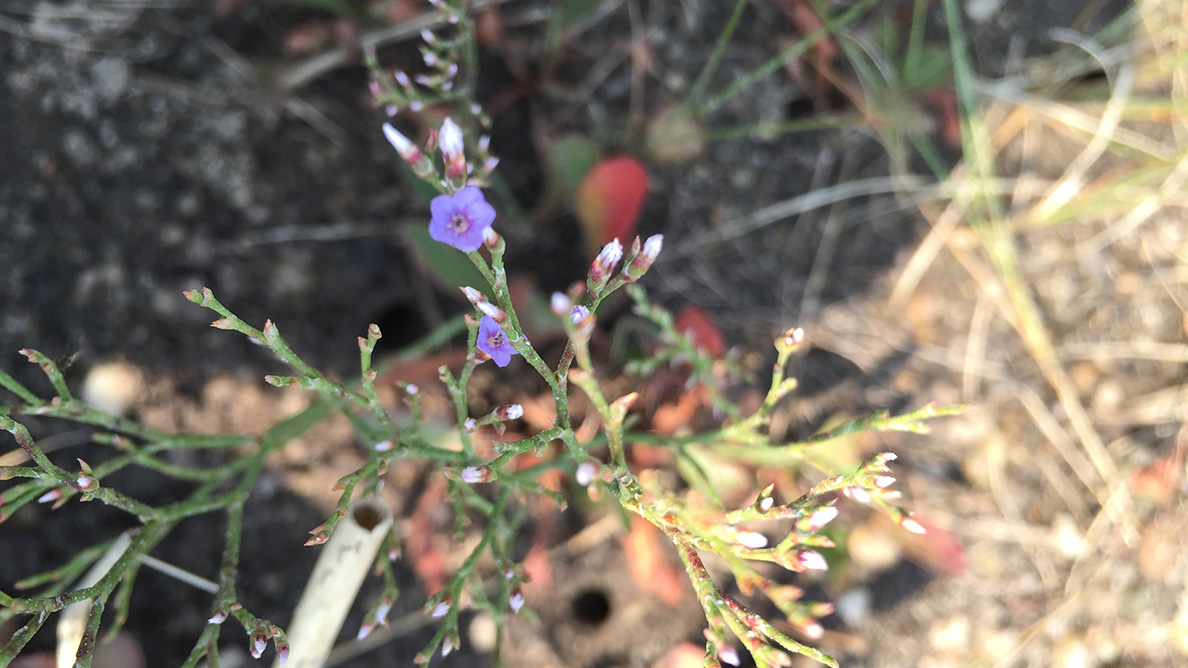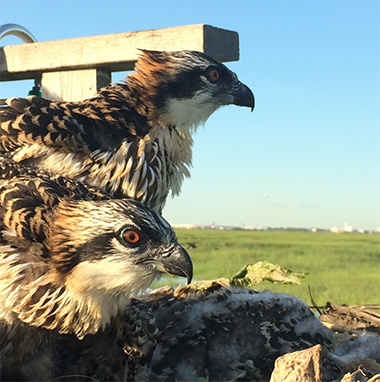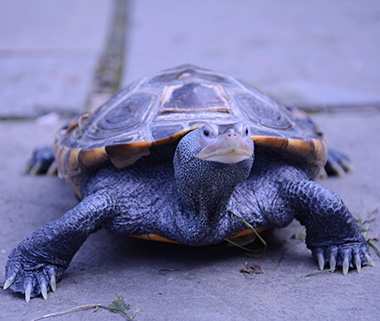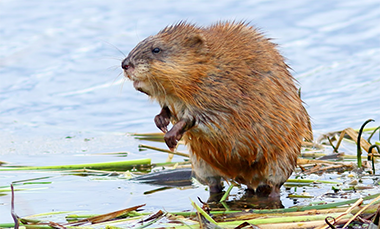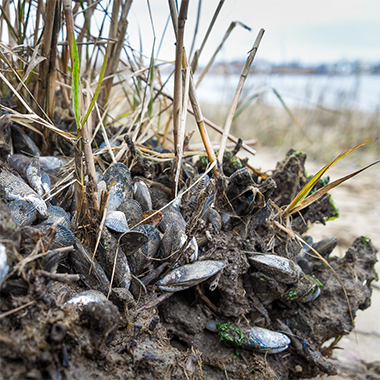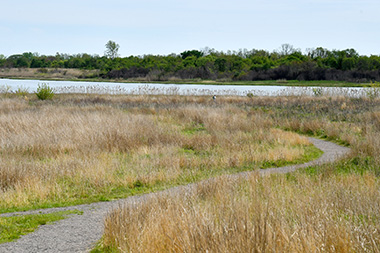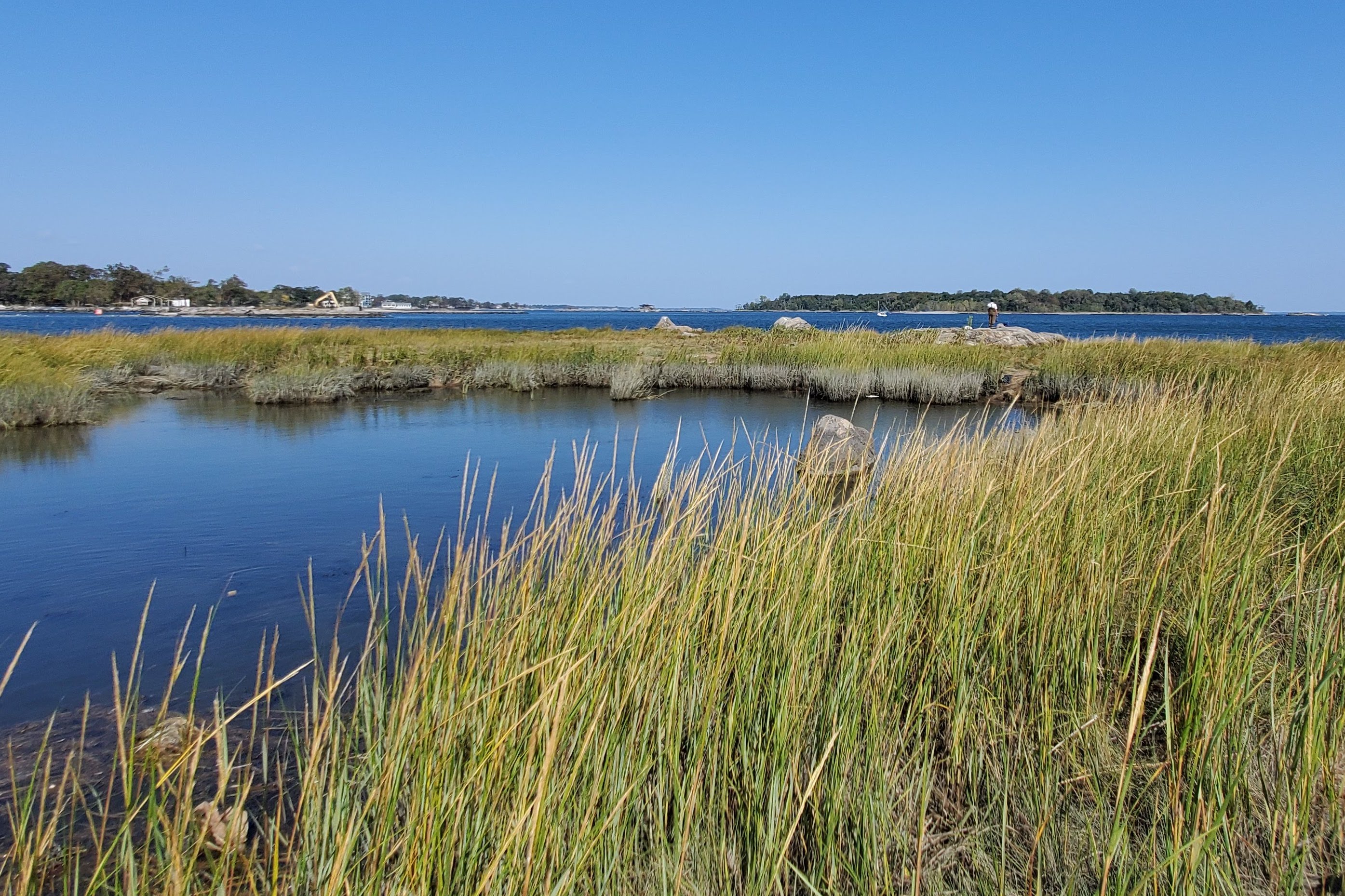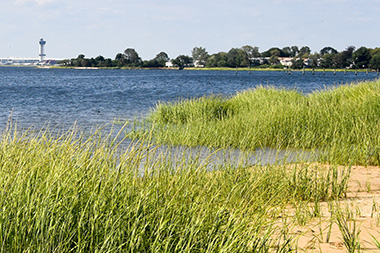Exploring Marine Park Salt Marsh

Within Marine Park, the largest park in Brooklyn, there is a unique ecosystem called a tidal salt marsh. Water from Jamaica Bay flows into and out of Gerritsen Creek twice a day, resulting in high and low water levels, or “tides”, on the shorelines of the park. This means the plants and animals that live along the creek need to not just be okay with getting wet at high tide and drying out at low tide, but also need to be tolerant of the brackish water that results from the mixing of saltwater from the bay and freshwater from stormwater runoff from the neighborhood.
Benefits of Tidal Salt Marshes
Tidal marsh areas like those in Marine Park support our city’s resiliency by soaking up stormwater and buffering wave impacts during weather events and by providing habitat for grasses whose extensive root systems reduce soil erosion and store carbon (which the plants absorb from the atmosphere). Tidal salt marshes are also ideal habitats for wildlife such as ospreys that build their homes along coastlines and at-risk animals like diamondback terrapins that better thrive in this unique environment.
Many of the plants and animals that thrive in this brackish habitat cannot be found in most other parks in New York City. Check out some of the common native plants and animals that live at the Marine Park Salt Marsh.
Native Plants
The salt marsh at Marine Park is a great place to observe some of the plants that are native to the local ecosystem. Not only do these species give the marsh its unique character, but they also support the ecosystem’s ability to provide benefits to humans, like helping with stormwater filtration, lowering of the urban heat island effect, and more.
When exploring the Marine Park salt marsh, you’re likely to encounter forbs and grasses that define the look and feel of a typical "grassy" salt marsh. While both are herbaceous plants (meaning, not trees) and may look similar, there are a few key identifiers to know if you’re looking at grass or a forb. Grasses have narrow leaf blades with parallel veins, usually with very small flowers called spikelets (picture the top of a stalk of wheat). In contrast, forbs have broad leaves and relatively showy flowers, like clover, for example. Here are some common grasses and forbs that grow in the salt marsh:
Spartina
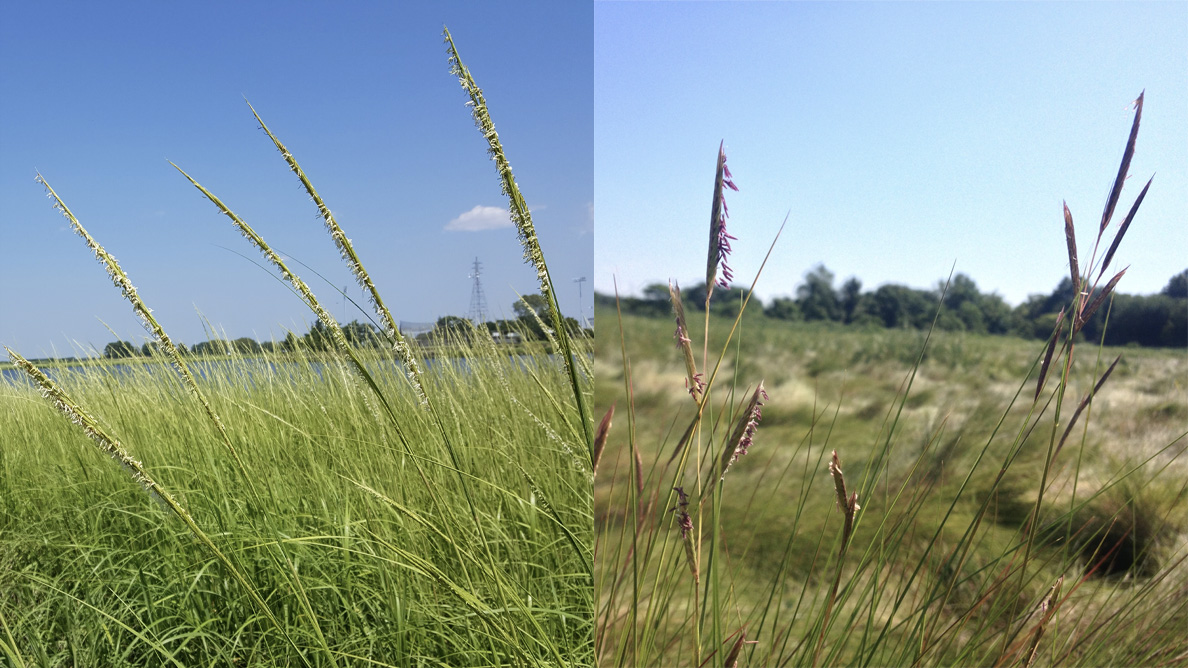
Spartina Alterniflora (left), Spartina Patens (right)
There are two different types of cordgrasses that can be found at salt marshes like Marine Park — Spartina alterniflora and Spartina patens. While they look like very simple grasses, they offer valuable coastal protection by absorbing impact from storm surges. Spartina patens is a shorter grass that lays somewhat flat over the ground as it grows or the wind blows, and is found on the landward side of the marsh. Spartina patens was historically used as fodder for animals. Spartina alterniflora grows more upright and is found on the waterward side of the marsh.
Sea Lavender
Photo Credit: Clara Holmes/NYC Parks
Sea lavender (Limonium carolinianum) is a forb that grows in the transition between the high and low marsh. Sea lavender has salt glands on its stalks that excrete the dissolved salt in the water it takes up, allowing the plant to survive in the saline environment.
Saltgrass
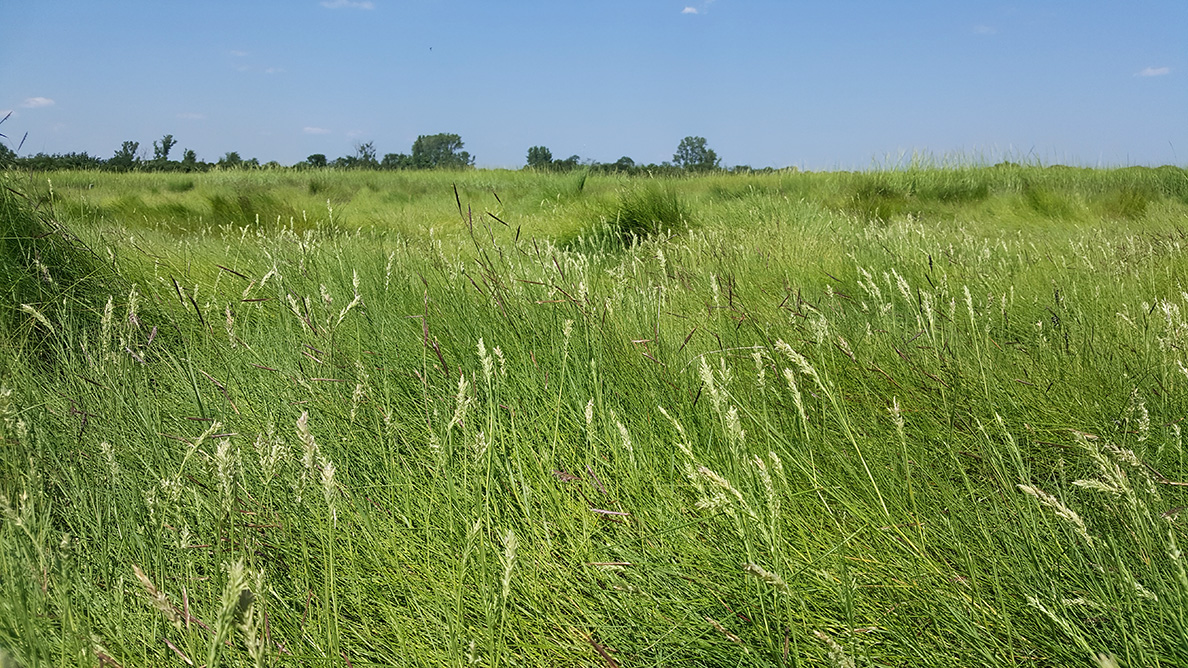
Another grass that’s easy to spot in the salt marsh is Distichlis spicata, also known as saltgrass. Its stems grow up to three feet high in dense mats and its seed heads are fairly short with large spikelets. Saltgrass is tolerant of the salty soils and waters of the salt marsh and serves as a food source and habitat for a variety of wildlife.
Common Wildlife
Look around the landscape, from the creek to the grassland to sky, for wildlife that thrive in the salt marsh.
* Click on the images below to view larger
Ospreys
Ospreys are also known as sea hawks. Their main diet is fish which makes living at a salt marsh very convenient for hunting. For the past several years, an established pair of ospreys has been returning to the same nesting site each year during spring. Ospreys love to build nests in tall trees and on utility poles. At Marine Park sat marsh, you can observe the nesting pair at the Osprey Nest Lookout, a raised platform near the southern end of the loop on the red trail. Each year they raise 2-3 chicks before they migrate south to Argentina. Remember to keep a respectful distance!
Photo Credit: Katie Leung/NYC Parks
Diamondback Terrapins
Unlike sea turtles, which mainly live in the water and tortoises that prefer to stay on dry land, terrapins are adapted to aquatic and terrestrial environments — both water and land. They are actually the only turtle species that live in the brackish waters (mix of saltwater and freshwater) of salt marshes. Diamondback terrapins can be seen swimming in the water or sunbathing on shores and wooden pilings at Marine Park. They can be recognized by their distinctive shell and skin patterns. Learn more about how we're protecting diamondback terrapins
Muskrats
Imagine a medium-sized, beaver-like rodent with a rat-like tail and you have a pretty accurate image of a muskrat! While they are nocturnal, meaning they are usually more active at night, they can sometimes be seen during the day. Their diet consists of things like aquatic plants, snails, fiddler crabs, and fish — all found at the Marine Park salt marsh!
Mussels, clams, and oysters
Marine Park is home to beds of these shellfish that protect the salt marsh ecosystem by reducing coastal erosion and absorbing impacts from tidal and storm surges. As filter feeders, they even improve water quality in the marsh and the adjacent harbor waters. If you spot the beds, make sure to appreciate them from a distance; touching or disturbing the beds can hurt the animals and stop them from doing their important ecological work. And, while these mussels and oysters might be part of the diet of local and migratory bird species, please don’t make them part of yours! Due to current and historic pollution, they are not safe for humans to eat.
In collaboration with the Billion Oyster Project, our Urban Park Rangers and students from a local school maintain an oyster research station, right in the marsh!
History
People have been active in the areas around Marine Park for centuries. Evidence of humans can still be observed today, from centuries-old artifacts from Canarsie and Munsee Lenape communities to remnants of the first tide-powered mill in North America that can be seen at low tide in Gerritsen Creek!
Learn more about the history of Marine Park
How NYC Parks Cares for the Salt Marsh
NYC Parks staff actively monitors the 20 acres (about 15 football fields) of restored salt marsh, keeping an eye on the health and diversity of the plants, as well as wildlife in the marsh, such as fiddler crabs, ribbed mussels, and snails. We recently completed a massive project to restore the salt marsh ecosystem around Gerritsen Creek. Our crews removed acres of invasive species, excavated some of the fill that was dumped on the site in the 20th century, and added clean sand to create a good foundation for native vegetation to grow.
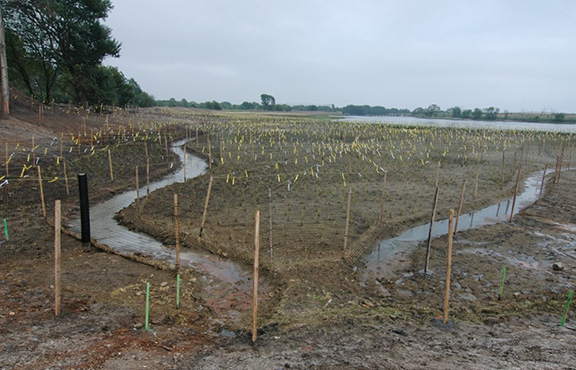
Before
As part of the restoration project, areas of the salt marsh were cleared of invasive species and made ready for native species to be planted.
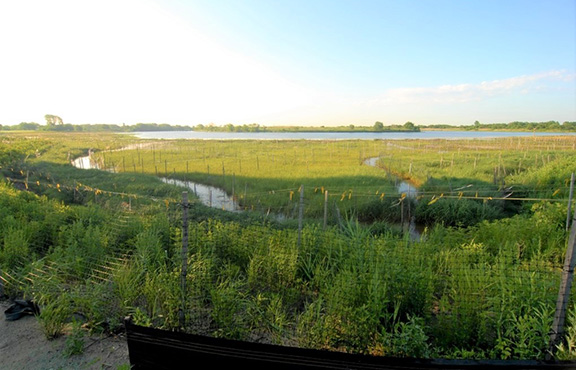
After
Months after planting, native species like Spartina alterniflora, switchgrass, butterfly milkweed, and more began to thrive. NYC Parks continues to maintain these restored areas of the marsh.
The NYC Parks Natural Resources Group works to protect and preserve the hundreds of acres of Marine Park through the Forever Wild program year-round. They host volunteer stewardship events that include removing garbage from the land and waterways, managing invasive species, planting native plants, and more.
How to Help
If you’d like to help us care for Marine Park, there are lots of ways to get involved! You can volunteer with NYC Parks or the Salt Marsh Alliance. When you visit, be sure to carry your trash out with you, stay on the official trails, and treat all wildlife and your fellow park-goers with respect.
Ready to Go Exploring?
See the salt marsh for yourself and discover more salt marshes around the city!
Hiking at Marine Park
Several trails wind through the salt marsh and offer opportunities to see the tides, birds, and beautiful expanse of the cordgrass.
Wetlands 101
Learn more about salt marshes and other wetlands, how we care for them, and how they help make New York City greener.
Salt Marshes of NYC
Take your adventure beyond Marine Park! Discover more salt marshes across the five boroughs.
View the Natural Areas Conservancy's map of NYC's salt marshes

